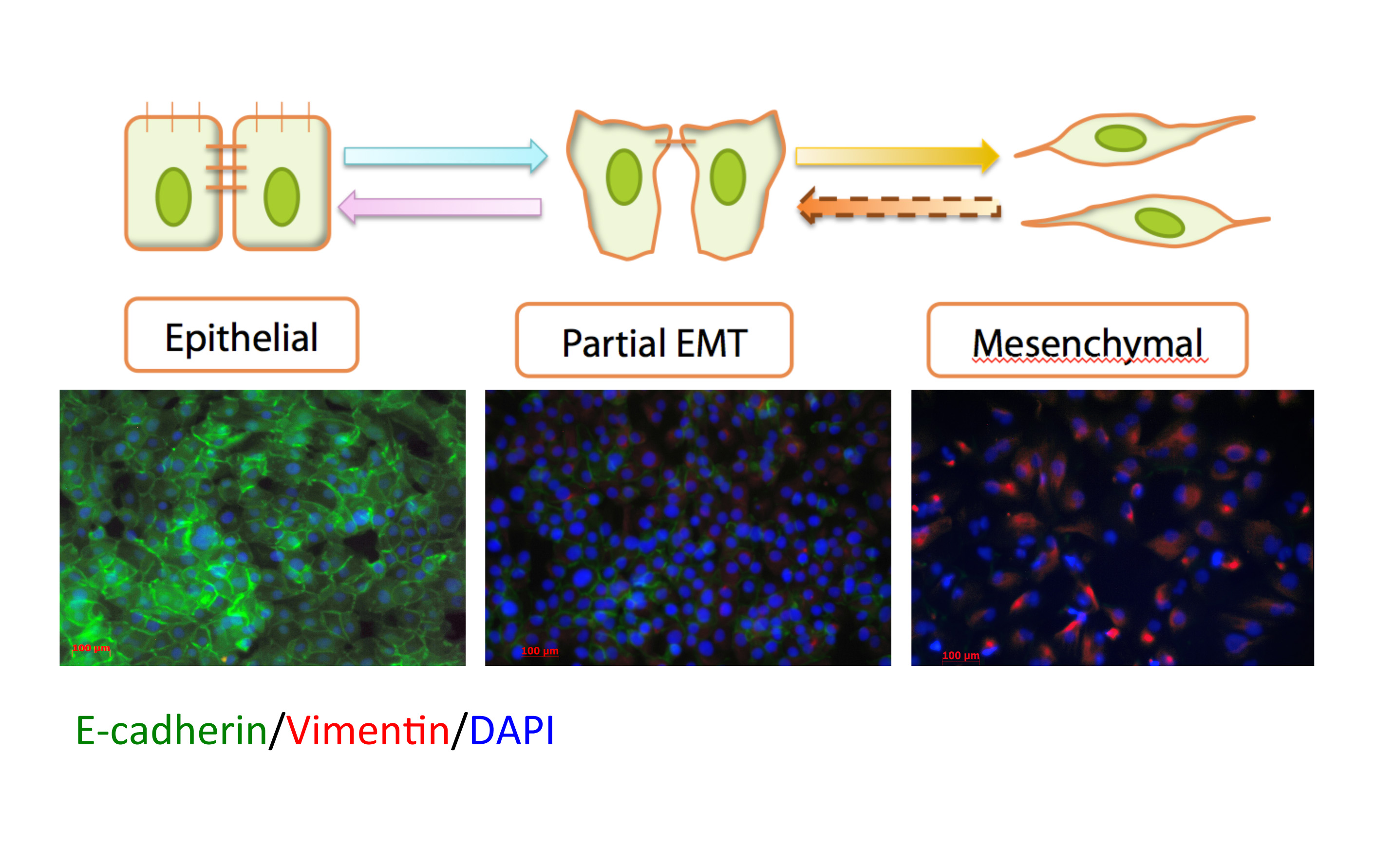Modeling cancer: Virginia Tech researchers prove mathematical models can predict cellular processes

How does a normal cellular process derail and become unhealthy?
A multi-institutional, international team led by Virginia Tech researchers studied cells found in breast and other types of connective tissue and discovered new information about cell transitions that take place during wound healing and cancer.
The results were published in a September issue of the journal Science Signaling.
During development, cells change forms and regroup from tight packs of epithelial cells to more mobile, loose arrays of mesenchymal cells.
The cell changes, known as an epithelial to mesenchymal transition, or EMT, are normal and helpful during wound healing, but problematic when cancer cells spread from the primary tumor site to other sites in the body.
To investigate, researchers developed mathematical models to predict the dynamics of cell transitions, and compared their results with actual measurements of activity in cell populations. As a result, they gained new understanding of how a substance known as transforming growth factor triggers cell transformations.
“Understanding this process is very important to prevent and treat many developmental abnormalities and cancer metastasis,” said Jianhua Xing, an associate professor of biological sciences in the College of Science and a Fralin Life Science Institute affiliate.
Jingyu Zhang of Shandong, China, a graduate student in biological sciences in the College of Science, also from Xing’s lab, performed the cell experiments under the guidance of Drs Jianhua Xing and Elankumaran Subbiah, an associate professor of virology in the Virginia-Maryland College of Veterinary Medicine.
Xiao-Jun Tian, a postdoctoral researcher in Xing’s lab, performed computational analyses.
These researchers found that EMT in the cells “involves a number of double-negative feedback loops functioning as switches,” said Zhang. “EMT takes place by sequentially turning on these switches.”
Xing explained that the theoretical prediction and experimental studies together confirmed this sequential bistable switch mechanism.
“Many theoretical mathematical models existed to explain the EMT mechanisms,” Subbiah said, “but, no conclusive experimental proof was available until now to support these models.”
Additional study researchers include Hang Zhang of Hebei, China, a graduate student in the genetics, bioinformatics, and computational biology Ph.D. program at Virginia Tech; Fan Bai, an assistant professor at Peking University; Ruoyan Li, a graduate student at Peking University; and Yue Teng, an assistant professor at Beijing Institute of Microbiology and Epidemiology.
Dedicated to its motto, Ut Prosim (That I May Serve), Virginia Tech takes a hands-on, engaging approach to education, preparing scholars to be leaders in their fields and communities. As the commonwealth’s most comprehensive university and its leading research institution, Virginia Tech offers 240 undergraduate and graduate degree programs to more than 31,000 students and manages a research portfolio of $513 million. The university fulfills its land-grant mission of transforming knowledge to practice through technological leadership and by fueling economic growth and job creation locally, regionally, and across Virginia.




